original
with SSTV-pic denoiser


|
www.rhci-online.net/radiogram/radiogram.htm
|
RSID: <<2014-02-08T12:30Z
MFSK-32 @ 6095000+1500>>
<STX>
The Winter SWL Fest is March 14-15 near Philadelphia.
Sponsored by NASWA, the North American Shortwave Association, the
Fest covers shortwave, mediumwave (AM), scanning, and other radio
listening hobbies.
I plan to be there to demonstrate text and images via shortwave.
More information at
swlfest.com.
<EOT>
Sending Pic:175x52;
|
original |
with SSTV-pic denoiser |
|
|
|
<EOT>
<STX>
Thanks to The Mighty KBC
<EOT>
██╗ ██╗ ██████╗ █████╗ ██████╗ █████╗ ██████╗ ██╗ ██████╗ ██████╗ ██████╗ █████╗ ███╗ ███╗ ██║ ██║██╔═══██╗██╔══██╗ ██╔══██╗██╔══██╗██╔══██╗██║██╔═══██╗██╔════╝ ██╔══██╗██╔══██╗████╗ ████║ ██║ ██║██║ ██║███████║ ██████╔╝███████║██║ ██║██║██║ ██║██║ ███╗██████╔╝███████║██╔████╔██║ ╚██╗ ██╔╝██║ ██║██╔══██║ ██╔══██╗██╔══██║██║ ██║██║██║ ██║██║ ██║██╔══██╗██╔══██║██║╚██╔╝██║ ╚████╔╝ ╚██████╔╝██║ ██║ ██║ ██║██║ ██║██████╔╝██║╚██████╔╝╚██████╔╝██║ ██║██║ ██║██║ ╚═╝ ██║ ╚═══╝ ╚═════╝ ╚═╝ ╚═╝ ╚═╝ ╚═╝╚═╝ ╚═╝╚═════╝ ╚═╝ ╚═════╝ ╚═════╝ ╚═╝ ╚═╝╚═╝ ╚═╝╚═╝ ╚═╝
RSID: <<2014-02-08T16:01Z
MFSK-32 @
17860000+1500>>
Welcome to program 45 of VOA Radiogram from the Voice of America.
I'm Kim Andrew Elliott in Washington.
This program will include simultaneous transmission of text,
centered on 1500 Hz, and images, centered on 2100 Hz. You can
decode the text and images sequentially from a recording of this
broadcast, or simultaneously by running two instances of Fldigi.
Here is the lineup for today's program:
1:30 MFSK32: Program preview (now)
4:06 MFSK32: Winter SWL Fest, with simultaneous image
5:30 MFSK32: Graphene, with simultaneous image
10:05 MFSK32: Telescope
16:22 MFSK64: Image of telescope
18:24 MFSK64: St. Louis aviation, followed by image
23:52 MFSK64: Turkey Internet crackdown
27:06 MFSK32: Closing announcements
Please send reception reports to radiogram@voanews.com
And visit voaradiogram.net
Twitter: @VOARadiogram
<EOT>
<STX>
This is VOA Radiogram from the Voice of America.
Please have two instances of Fldigi running for a simultaneous
transmission of text and images in MFSK32.
The RxID should be turned on (green) in both instances of Fldigi.
VOA Radiogram now moves to a center audio frequency of
2100 Hz.
<EOT>
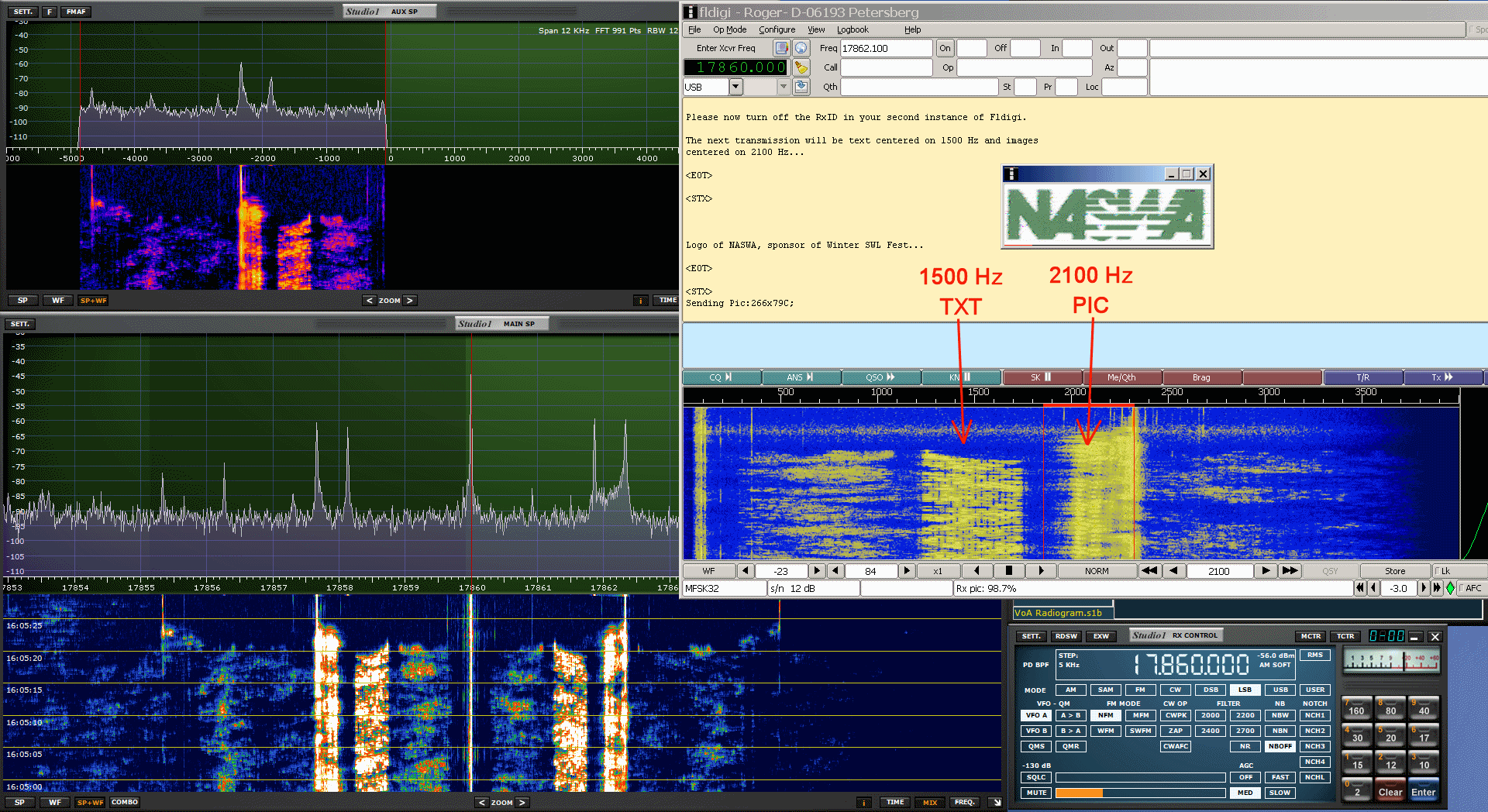
|
RSID: <<2014-02-08T16:04Z MFSK-32 @ 17860000+1500>>
|
RSID: <<2014-02-08T16:03Z MFSK-32 @ 17860000+2100>>
|
||||
|
<STX>
|
<STX>
|
|
1500 Hz |
2100 Hz |
||||
|
<STX>
|
<STX>
Screen capture from the video version of this VOA News story
|
<STX>
This is VOA Radiogram from the Voice of America.
You may now close or minimize your second instance of Fldigi...
<EOT>
<STX>
VOA NEWS
Giant Telescope to Probe Origin of Universe
Rosanne Skirble
February 04, 2014
A new telescope is being readied to probe the mysteries of the
cosmos. Once completed, the Giant Magellan Telescope will be the
most powerful on the planet.
The instrument is under construction at the University of Arizona
and, when it's completed by 2020, will allow astronomers to probe
the origin of the universe.
"We want to know what is the overall size and structure of the
universe. What is it comprised of? What is our place in the
universe?" said Patrick McCarthy, director of the Giant Magellan
Telescope Organization, who came to the American Astronomical
Society Annual Meeting in Washington. "Are there other planets in
the universe that might hold life? And what is the overall fate
and evolution of the universe? So we just want to know, where are
we? And who else is with us?"
The 25-meter diameter telescope is comprised of seven mirrors
that work together to make a single optical telescope. Each of
the mirrors is 8.4 meters in diameter. Even though Magellan is
based on Earth, and gathering light that is filtered through the
atmosphere, it will offer the highest resolution images ever seen
to explore deep space.
Magellan's enormous light collecting capacity will allow it to
follow the path of our evolving universe, from gas and elementary
particles to the rich world of galaxies, stars and planets we see
today.
"Once you see them, then you can start to actually look at their
atmospheres to see if there are signs of life or at least
biomarkers like water, oxygen, chlorophyll perhaps," McCarthy
said. "And then on the very largest scales, we can measure the
expansion history of the universe and try to understand this
mysterious acceleration and ask what the fate of the universe is
100 billion years from now."
Each mirror is the product of cutting-edge technology and
processing. First, a mold is built that can accommodate and cast
some 20 tons of crushed glass.
"You put the glass in there. You enclose it in a furnace filled
with heating filaments," McCarthy said. "You heat it up to about
2,000 degrees. As the glass starts to melt, we spin the furnace.
We rotate it so as it melts, the glass takes a natural parabolic
shape."
After two days spinning the mirror is allowed to cool, one degree
a day for four months, to avoid stresses that could lead to
cracks.
"Then after those four months, we open the top, and see what we
have got," McCarthy said. "And we just did that on mirror number
three and it is beautiful."
oy ¹ uch more work to do, to polish the glass smooth to
just the right prescription, with finer and finer tools. The
$1-billion project is the largest privately led telescope
initiative in history, a global partnership among academic and
science institutions.
"It is 10 years of problem solving challenges, careful thinking,
doing something that you have never done before," McCarthy said.
"That is why it takes a big team, very talented people, a lot of
thought, a lot of planning."
The Giant Magellan is slated to begin operation on a Chilean
mountain top in 2020, with four of its seven primary mirrors.
When the final stages are complete, it will have 10 times the
resolution of the Hubble Space Telescope. McCarthy acknowledges
that he probably will not be around to reap its benefits.
"These kinds of projects are kind of career-length projects or
pretty close to it," he said. "So people like myself, we do this
knowing that the next generation will be the users. They will be
the ones to make the discoveries. Discoveries that we cannot yet
even imagine."
http://www.voanews.com/content/giant-magellan-telescope-to-probe-origin-of-universe/1844097.html
<EOT>
<STX>
VOA Radiogram now changes to MFSK64...
<EOT>
RSID: <<2014-02-08T16:15Z
MFSK-64
@ 17860000+1500>>
This is VOA Radiogram in MFSK64.
MFSK64 image follows: Artist drawing of what the Giant Magellan
Telescope will look like when it’s completed...
<STX>
Sending Pic:243x135C;
|
original |
with SSTV-pic denoiser |
|
|
|
<EOT>
<STX>
This is VOA Radiogram from the Voice of America
VOA NEWS
St. Louis Inspires Aviation Innovation
Shelley Schlender
February 03, 2014
ST. LOUIS, MISSOURI - For nearly a century, entrepreneurs in the
midwestern U.S. city of St. Louis, Missouri, have reached for the
sky, backing two of the world's most famous flying contests.
First, Charles Lindbergh's transatlantic flight in the 1920s.
Then, in 1996, the XPRIZE, which led to the world's first private
reusable manned spacecraft.
Making dreams fly
St. Louis entrepreneur Gregg Maryniak enjoys spending time at a
mid-size airport watching single engine planes rumble into the
sky. He says similar airplanes, and a book about them, ignited
his passion for making dreams fly.
"I read 'The Spirit of St. Louis,' and within a year, I was
taking flying lessons," Maryniak said. "I was one of those kids
that would spend all the money I would make pushing lawnmowers
and doing various other odd jobs to pay for an hour of dual
instruction in a plane."
The book that supercharged Maryniak's ambition is about Charles
Lindbergh. In 1927, the lanky young pilot entered a contest that
promised $25,000 to the first person to fly non-stop from New
York to Paris.
Many pilots had died attempting the 5,800-kilometer flight.
Lindbergh's lack of connection with prestigious aviation efforts
led journalists to call him "the flying fool."
But financial backers from St. Louis believed in him. In their
honor, Lindbergh named his plane "The Spirit of St. Louis" and
won the prize.
Modern aviation
Maryniak says Lindbergh's success opened the door for modern
aviation.
"Within a year, the number of pilots in America triples, the
number of airplanes quadruples," he said. "And the number of
people buying tickets to go on commercial flights goes up 30
fold."
That $25,000 prize was a surprisingly small investment to spawn
today's $500 billion aviation industry. And Maryniak plays a big
part in a futuristic wing of that industry.
In the early 1990s, he and his friend, entrepreneur Peter
Diamandis, proposed a new contest, to inspire private companies
to develop better planes - for space.
"Everybody knew, quote unquote - that only NASA and the Russians,
at the time we announced the prize, could send people to space,"
Maryniak said. "We knew that wasn't true. In fact, we'd been
stymied by people's beliefs that only governments could do this.
We really wanted to change that."
For start-up funds, Maryniak headed to where Lindbergh had gone
70 years earlier - St. Louis.
"I think in most cities, we would have been launched into space
by the toe of people's boots, but not here in St. Louis," said
Maryniak. "We got the initial seed money that allowed us to start
the foundation."
Benefiting mankind
The XPRIZE Foundation's mission is to create public competitions,
designed to kickstart technologies that benefit mankind.
In 1996, the head of NASA and 20 astronauts joined Diamandis as
he stood beside St. Louis's landmark of soaring ambition - the
200 meter high Gateway Arch - and issued a challenge.
"This $10 million award will be going to the winner, which is the
first team to do the following - to privately build a spaceship.
Privately finance that ship. Carry three individuals, and do that
twice inside of two weeks," Diamandis said.
More than two dozen national and international teams entered that
first XPRIZE competition. In 2004, the Scaled Composites company
won with a plane named SpaceShipOne.
Since then, many companies have designed better ways to fly
people and cargo into space. Other XPRIZES have spurred
innovations ranging from more fuel efficient cars to oil spill
cleanups. A current prize challenges entrepreneurs to put robots
on the moon.
These days, the XPRIZE headquarters are in California, but
Maryniak continues to live in the city that first believed in
Lindbergh, and in the XPRIZE.
"There's nothing special in the water in places like Silicon
Valley or even St. Louis that makes entrepreneurship possible,"
he said. "I think it has to do with the spirit of the community."
Maryniak travels frequently, looking for other communities ready
to tackle possibilities just out of view, with an XPRIZE.
http://www.voanews.com/content/st-louis-inspires-aviation-innovation/1843457.html
<EOT>
<STX>
MFSK64 image follows: SpaceShipOne
<EOT>
<STX>
Sending Pic:240x160C;
|
original |
with SSTV-pic denoiser |
|
|
|
<EOT>
<STX>
This is VOA Radiogram from the Voice of America
Turkey's Crackdown on Internet a
Matter of Politics
Dorian Jones
January 31, 2014
ISTANBUL - The Turkish government is facing growing criticism
over its proposals to control Internet use. The moves come with
the government mired in corruption allegations.
The center of Istanbul became a battleground, with police using
water cannons and tear gas to disperse a mid-January
demonstration against government proposals to control the
Internet. Were the proposals to become law, Internet service
providers would be compelled to block websites within four hours
of being ordered to do so by the government, block key word
searches if so ordered, and keep customers' user information for
two years.
Lawyer Selin Kaledelen of the Korsan website, which campaigns for
freedom of information, said the government's Internet proposals
are aimed at stifling allegations of high-level government
corruption. "My reaction? I was not shocked because I was waiting
for that … This law gives the opportunity of the authorities to
block these websites within four hours," he explained. "So for
me, it's dictatorship of the authorities in terms of law. It's a
censorship law and we don't recognize it."
In December, a major judicial probe was launched into alleged
high-level government corruption. Prime Minister Recep Tayyip
Erdogan responded by reassigning thousands of police officers and
prosecutors linked to the investigation, saying the probe was a
unfairly targeting government allies.
Political analyst Cengiz Aktar of the Istanbul Policy Forum says
the new law is part of a worrying trend. "This is probably the
last nail on the already ailing Internet freedom in this country.
The law of 2007 was already very restrictive. Turkey was one of
the worst countries in terms of Internet freedom even now. We
will see how far it will go. It's always very difficult to cut
all links from the world to make Turkey something which would
look like North Korea. But these are desperate moves by the
government," he said.
But the government insists the proposals are just about
protecting people's privacy and are in line with international
standards.
Under existing legislation, Turkish courts have blocked more than
40,000 websites, one of the highest figures in the world. Popular
sites such as YouTube have been banned for several years.
Yaman Akdeniz, a professor of law and expert on cyber freedoms at
Istanbul's Bilgi University, questions the effectiveness of such
controls.
"Turkish people, since the of blocking access to YouTube, have
become very much knowledgeable about the Internet and related
matters," said Aktar. "If somebody wants to access information,
you will not be able to stop them as long as they know the
information is out there."
With Prime Minister Erdogan's ruling AK Party enjoying a large
majority in parliament, it's expected that the Internet reforms
will become law. But Selin Kaledelen of the Korsan website
predicts the government will face an increasingly bitter battle
over Internet freedom.
"I don't think they will succeed now. People like us will talk.
It's not just about government corruption, it can be any case. So
we will have additional routes and roads to communicate in the
future. They can't stop us. But maybe they can build their own
cyber army, because they are doing that. They are hiring some
computer scientists, or coders and hackers. They are building
their own crew," stated Kaledelen.
A recent Turkish opinion poll found 64 percent of people did not
believe the country's mainstream media were freely covering
government corruption allegations. Observers say the Internet is
increasingly seen as an important alternative source of news.
With Turkey entering into an 18-month period of elections, the
outcome of the battle over Internet freedom is expected to have
far reaching consequences for the country.
http://www.voanews.com/content/politics-involved-in-turkeys-crackdown-on-internet/1841941.html
<EOT>
<STX>
VOA Radiogram now changes to MFSK32 for closing announcements...
<EOT>
RSID: <<2014-02-08T16:26Z
MFSK-32
@ 17860000+1500>>
<STX>
Please send reception reports to radiogram@voanews.com
And visit voaradiogram.net
Twitter: @VOARadiogram
Thanks to colleagues at the Edward R. Murrow shortwave
transmitting station in North Carolina.
I'm Kim Elliott. Please join us for the next VOA Radiogram.
This is VOA, the Voice of America.
<EOT>
<STX>
Sending Pic:316x28C;
|
original |
with SSTV-pic denoiser |
|
|
|
<EOT>
RSID: <<2014-02-08T16:28Z
OL 16-500 @ 17860000+1500>>
Thank you for decoding the modes on VOA Radiogram.
www.rhci-online.net/radiogram/radiogram.htm
|
QTH: |
D-06193 Petersberg (Germany/Germania) |
|
Ant.: |
Dipol for 40m-Band |
|
RX: |
ICOM IC-R75 + IF-mixer |
|
Software IF: |
con STUDIO1 - Software italiano per SDR in LSB/S-AM |
|
Software AF: |
|
|
OS: |
German XP-SP3 with support for asian languages |
|
PC: |
MEDION Titanium 8008 (since 2003) [ P4 - 2,6 GHz] |
DRM-images - received via EASYPAL/DSSTV on 14233kHz/USB (FRG-100 / Dipol for ~12 MHz)
Here are some pictures of 9H4CM [Charlie from Gozo Island near Malta] received in the last days:
|
|
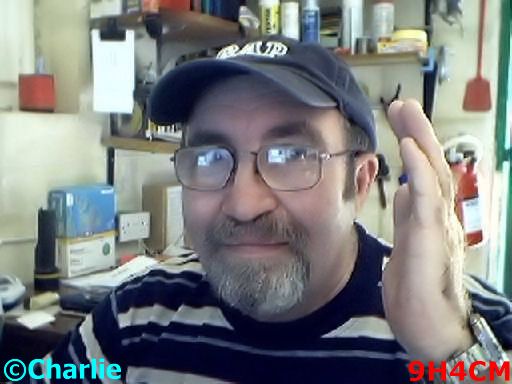 |
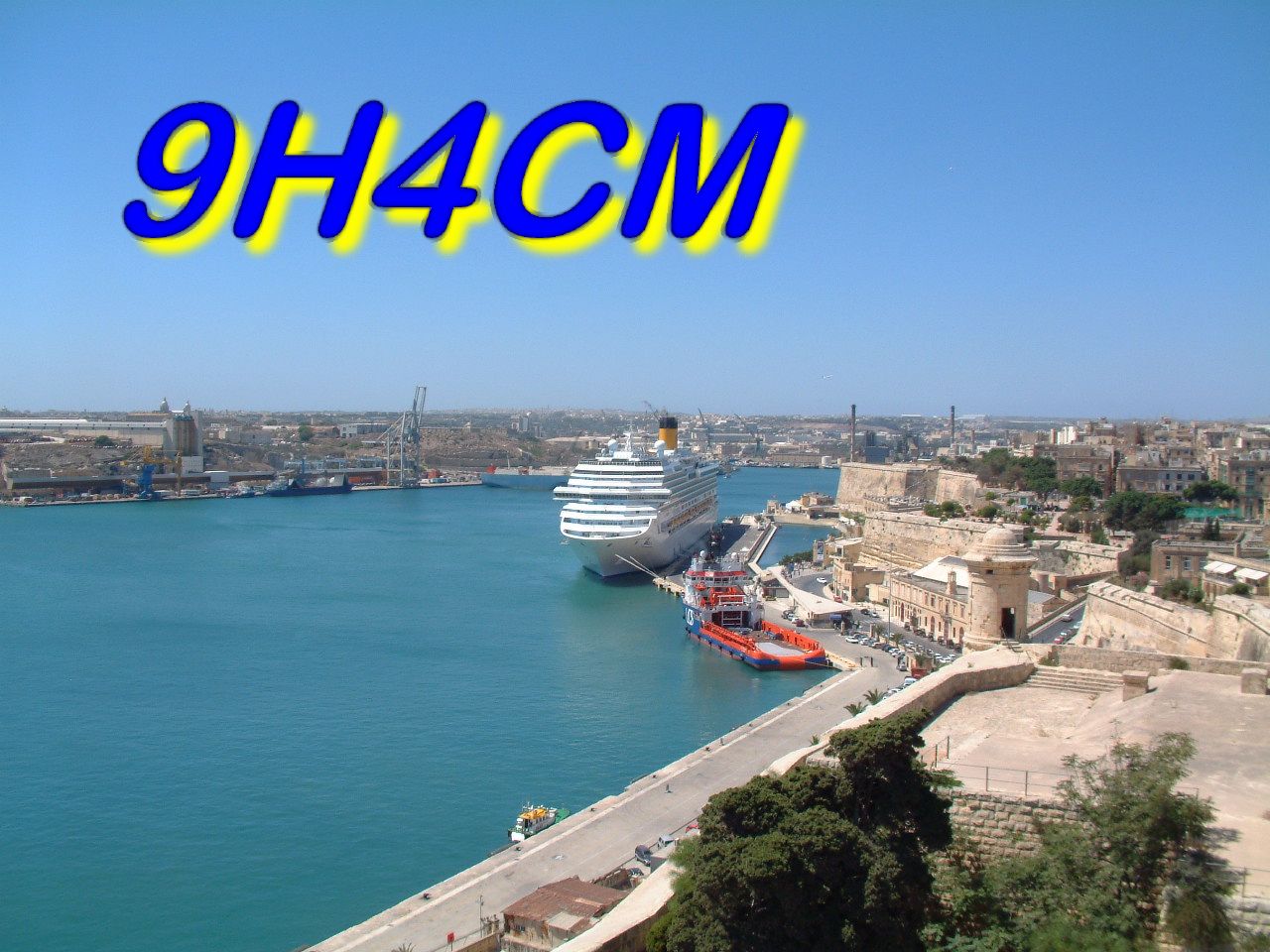 |
|
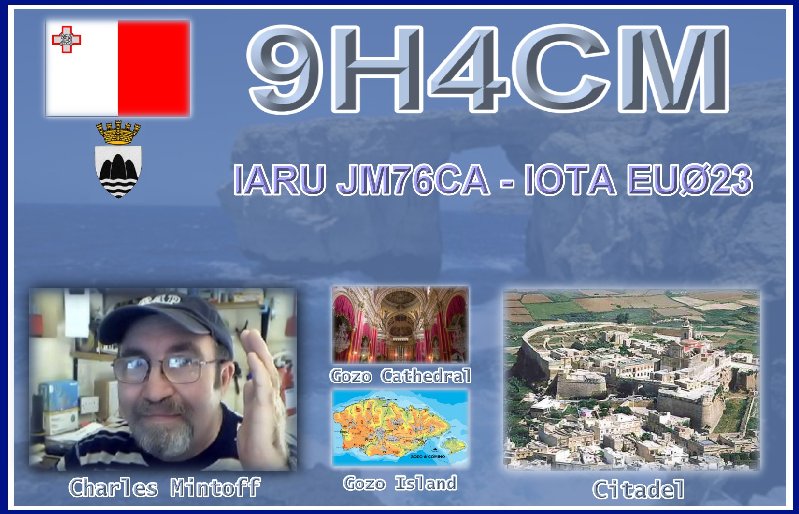 |
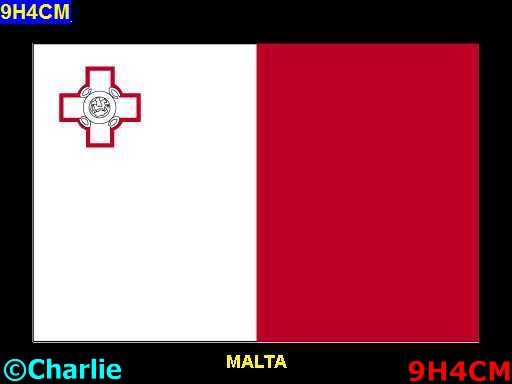 |
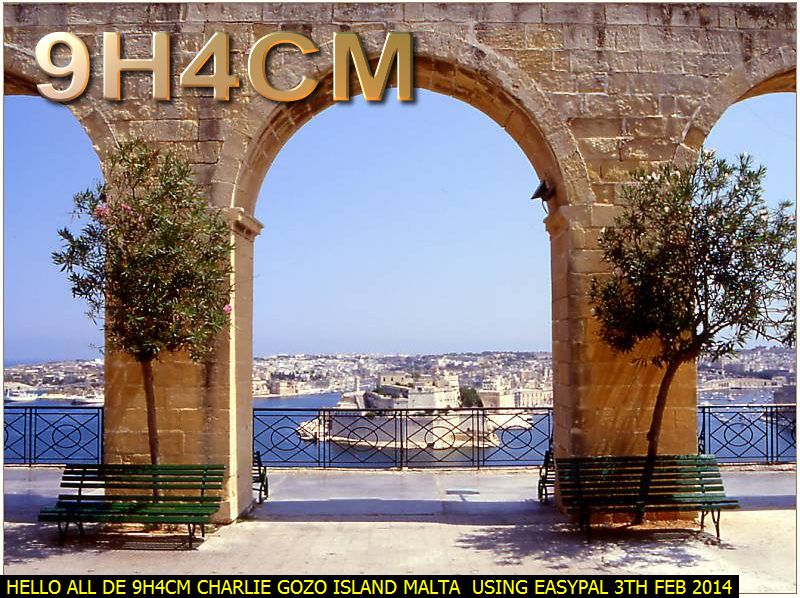 |
|
|
|
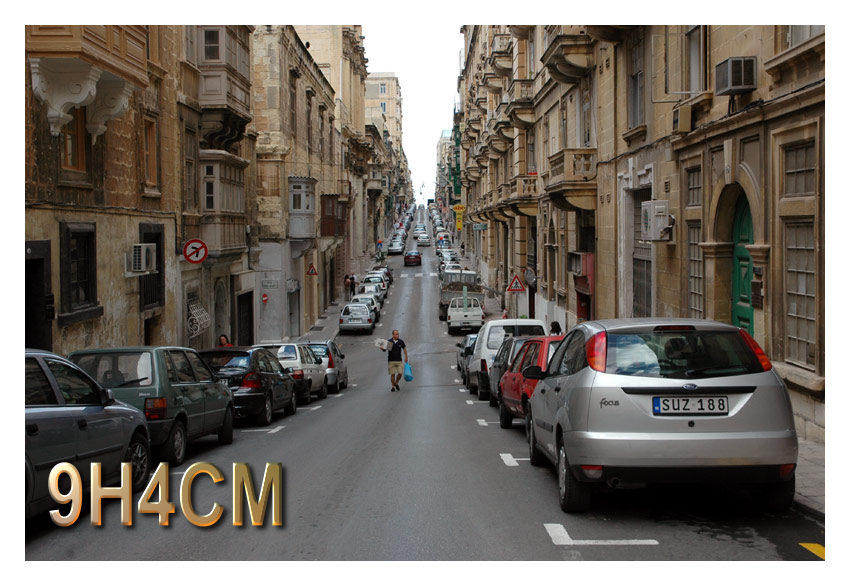 |
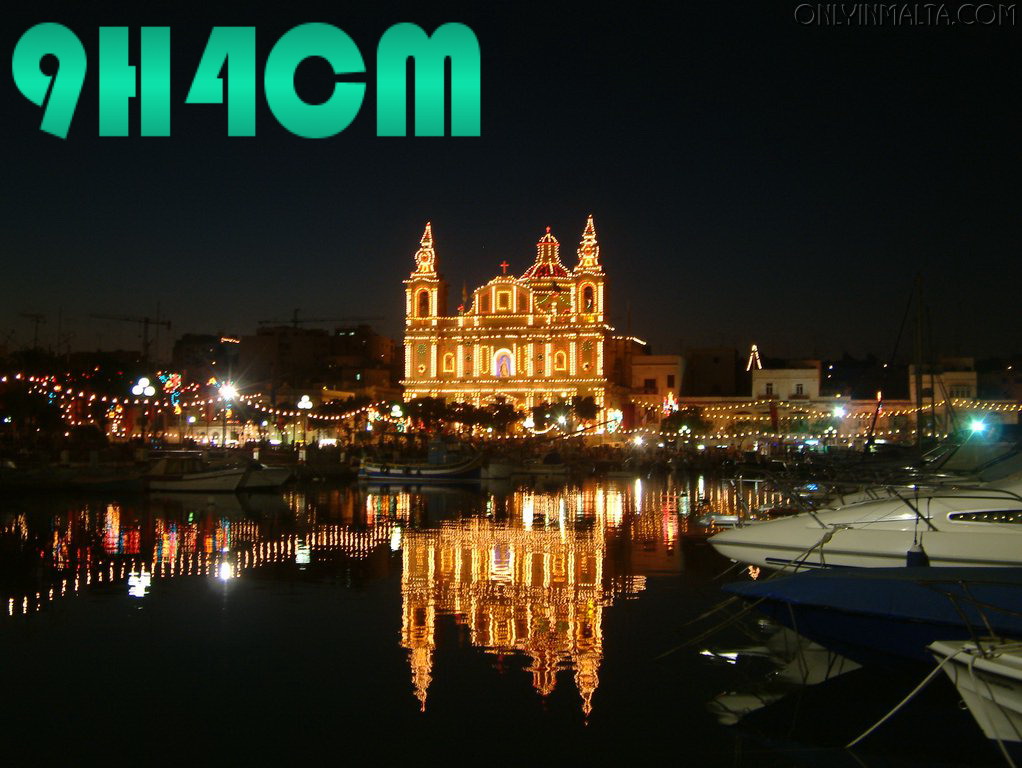 |
|
|
|
 |